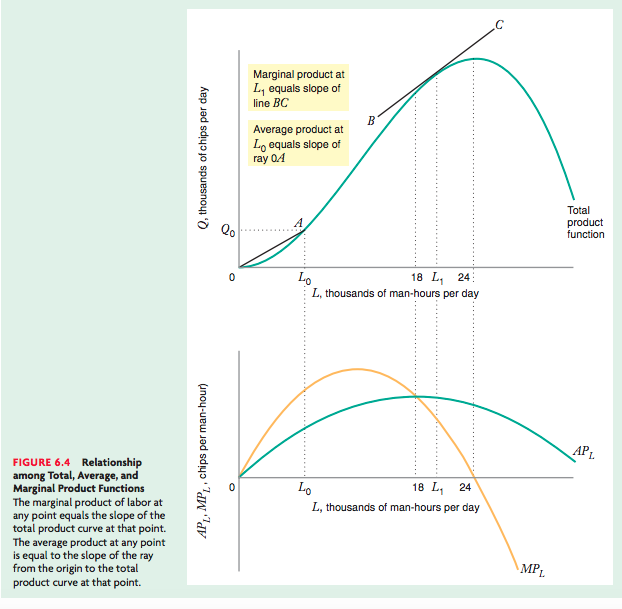Summary: Production Functions
by
11th September 2015
SUMMARY: Production Functions
- The production function tells us the maximum quantity of output a firm can get as a function of the quantities of various inputs that it might employ.
- There are three variable inputs – Land, Labour and capital.
- Single-input production functions are total product functions. A total product function typically has three regions: a region of increasing marginal returns, a region of diminishing marginal returns, and a region of diminishing total returns.
- The average product of labor is the average amount of output per unit of labor. The marginal product of labor is the rate at which total output changes as the quantity of labor a firm uses changes.
- The law of diminishing marginal returns says that as the usage of one input (e.g., labor) increases—the quantities of other inputs, such as capital or land, being held fixed—then at some point the marginal product of that input will decrease.
- Three important special production functions are the linear production function (perfect substitutes), the fixed proportions production function (perfect complements), and the Cobb–Douglas production function. Each of these is a member of a class of production functions known as constant elasticity of substitution production functions
- Returns to scale tell us the percentage by which output will increase when all inputs are increased by a given percentage. If a given percentage increase in the quantities of all inputs increases output by more than that percentage, we have increasing returns to scale. If a given percentage increase in the quantities of all inputs increases output by less than that percentage, we have decreasing returns to scale. If a given percentage increase in the quantities of all inputs increases output by the same percentage, we have constant returns to scale.
- Technological progress refers to a situation in which a firm can achieve more output from a given combination of inputs, or equivalently, the same amount of output from smaller quantities of inputs. Technological progress can be neutral, labor saving, or capital saving, depending on whether the marginal rate of technical substitution remains the same,


0 Comments